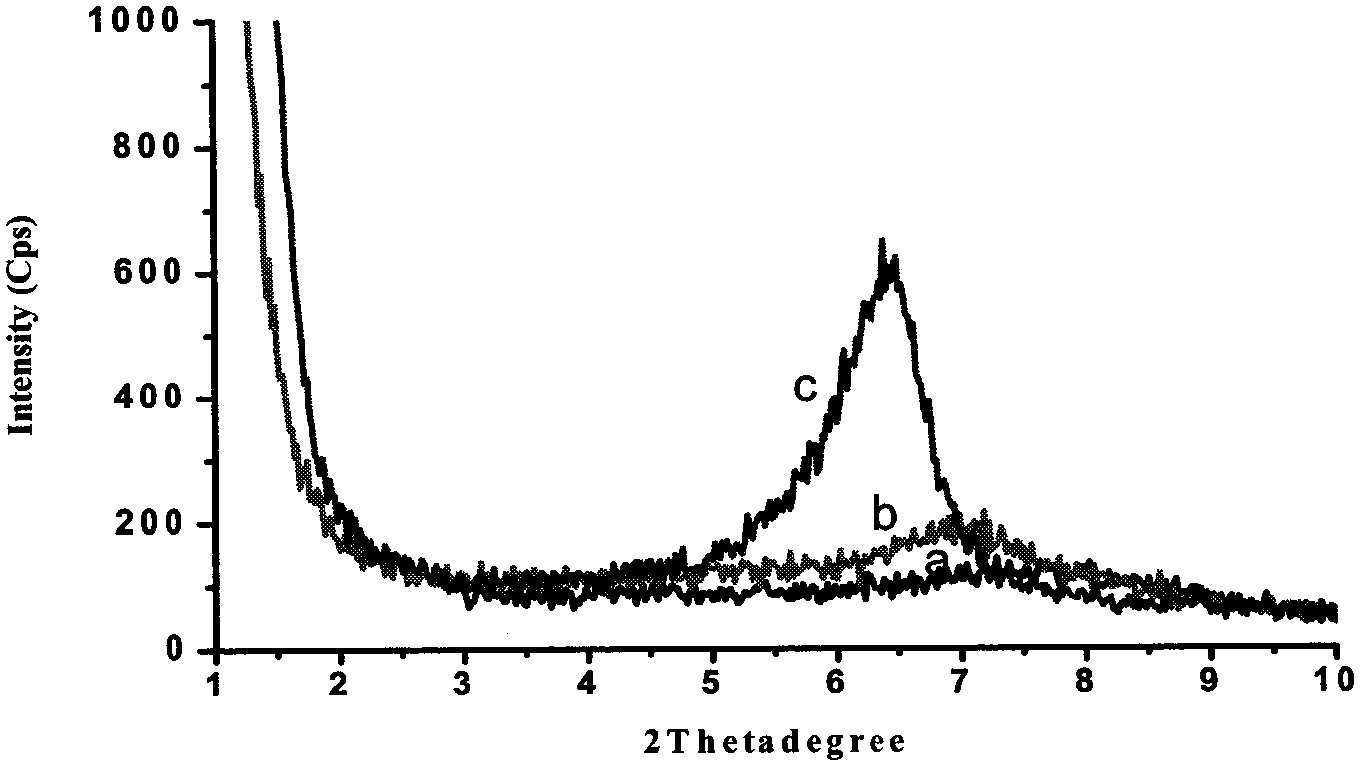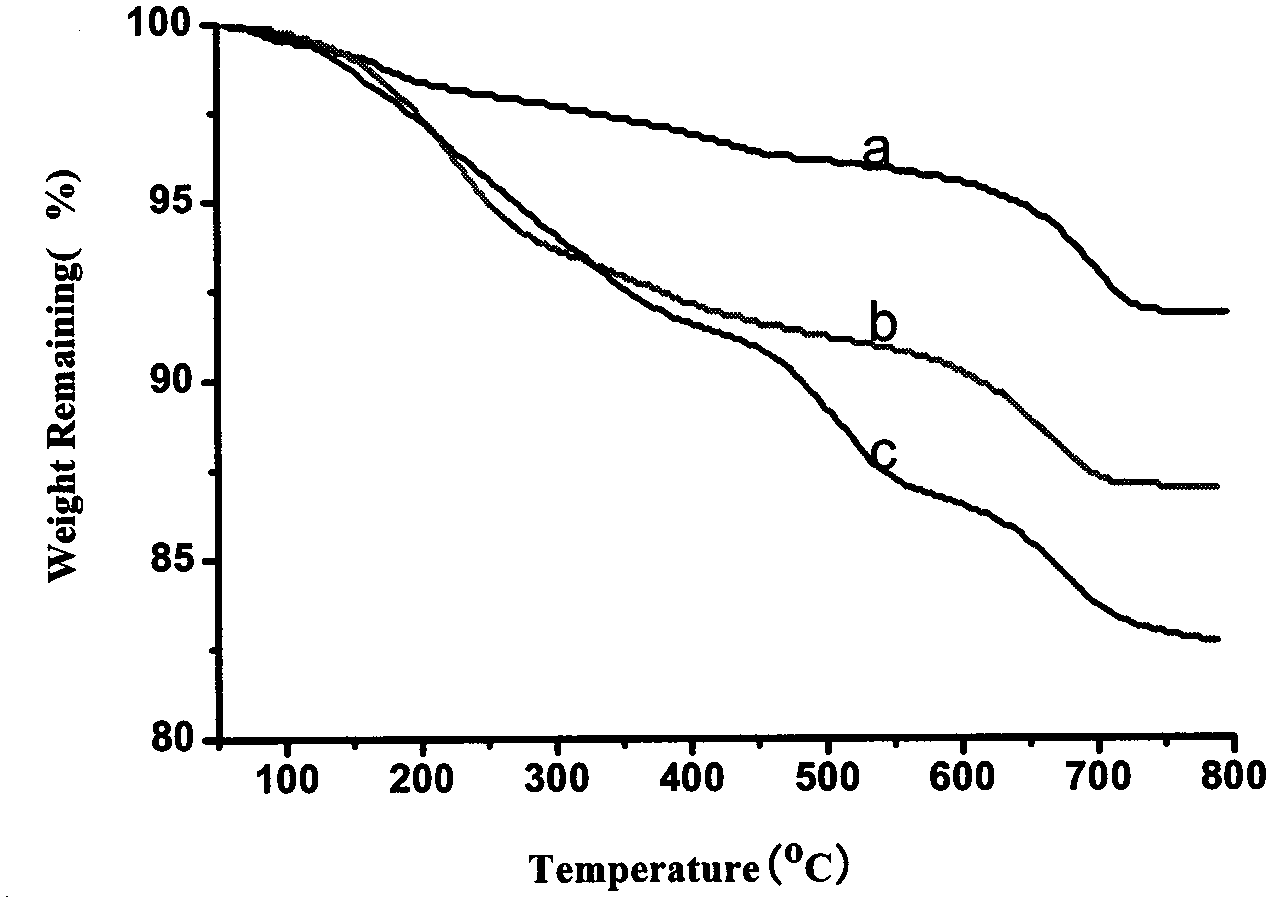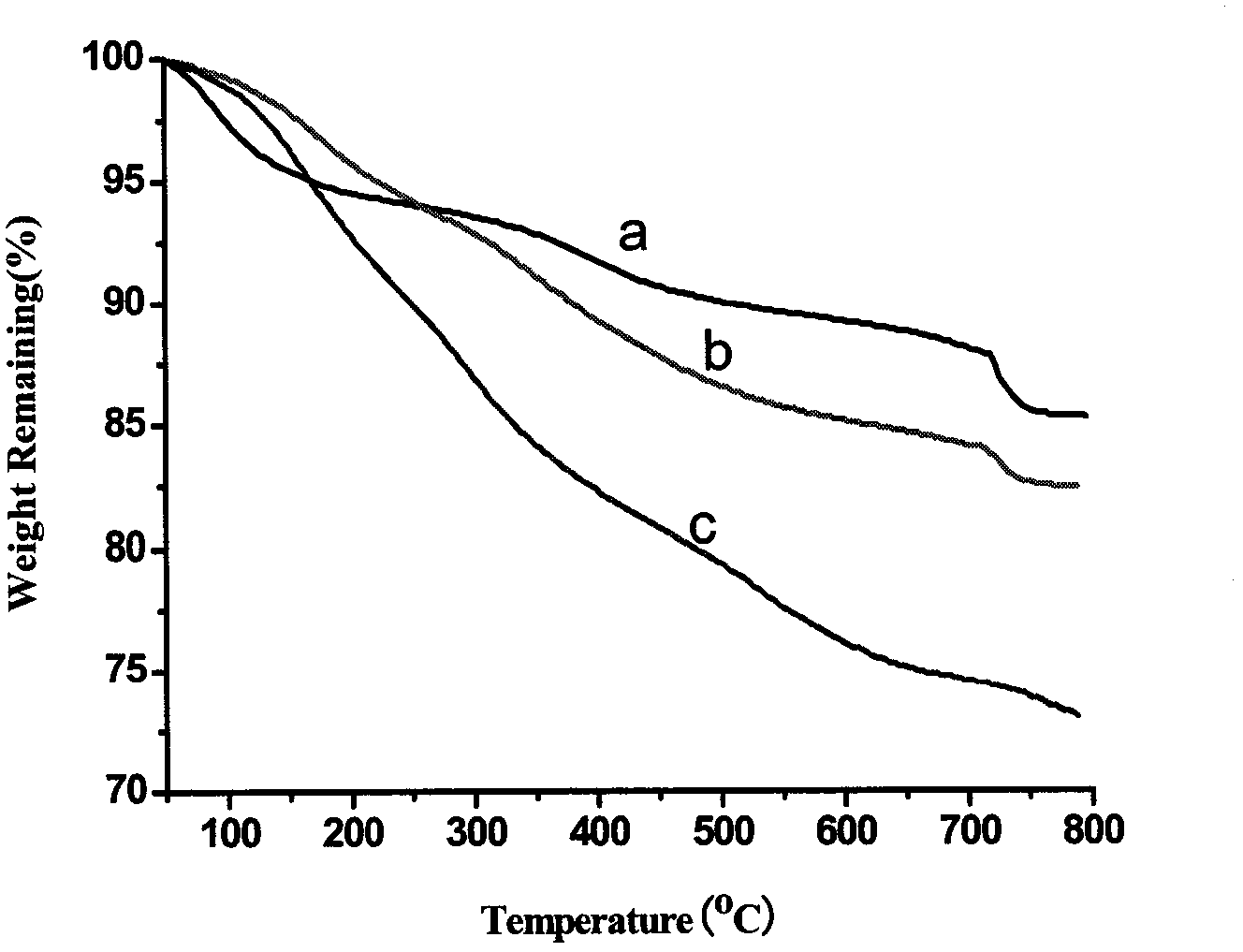Cyclodextrin-clay composite and preparation method thereof
A composite material and cyclodextrin technology, applied in separation methods, chemical instruments and methods, other chemical processes, etc., can solve the problem of no chemical bonding and achieve high-efficiency adsorption
- Summary
- Abstract
- Description
- Claims
- Application Information
AI Technical Summary
Problems solved by technology
Method used
Image
Examples
Embodiment 1
[0031] Put 278g of α-cyclodextrin (α-CD), 466g of sodium chloroacetate and 192g of sodium hydroxide in a 25L reactor, measure 2L of deionized water, react at 80°C for 3h, then cool with an ice bath, and wait for After the temperature of the solution drops to room temperature, add 3 mol / l hydrochloric acid dropwise to adjust the pH value to 6, precipitate with a large amount of methanol and dissolve the precipitate several times to wash away unreacted raw materials and by-product sodium chloride. Finally, the product is exchanged with ion exchange resin (Z001×4) to convert sodium ions into hydrogen ions. After the column is finished, the product is placed in a freeze dryer to dry for a week, and finally carboxymethylated cyclodextrin (α- CMCD).
Embodiment 2
[0033] Put 324g of β-cyclodextrin (β-CD), 466g of sodium chloroacetate and 192g of sodium hydroxide in a 25L reactor, measure 2L of deionized water, react at 80°C for 3h, then cool with an ice bath, and wait for After the temperature of the solution drops to room temperature, add 3 mol / l hydrochloric acid dropwise to adjust the pH value to 6, precipitate with a large amount of methanol and dissolve the precipitate several times to wash away unreacted raw materials and by-product sodium chloride. Finally, the product is exchanged with an ion exchange resin (Z001×4) to convert sodium ions into hydrogen ions. After passing through the column, the product is placed in a freeze dryer to dry for a week, and finally carboxymethylated cyclodextrin (β- CMCD).
Embodiment 3
[0035] Put 370g of γ-cyclodextrin (γ-CD), 466g of sodium chloroacetate and 192g of sodium hydroxide in a 25L reactor, measure 2L of deionized water, react at 80°C for 3h, then cool with an ice bath, and wait for After the temperature of the solution drops to room temperature, add 3 mol / l hydrochloric acid dropwise to adjust the pH value to 6, precipitate with a large amount of methanol and dissolve the precipitate several times to wash away unreacted raw materials and by-product sodium chloride. Finally, the product is exchanged with ion exchange resin (Z001×4) to convert sodium ions into hydrogen ions. After the column is finished, the product is placed in a freeze dryer to dry for one week, and finally carboxymethylated cyclodextrin (γ- CMCD).
PUM
 Login to View More
Login to View More Abstract
Description
Claims
Application Information
 Login to View More
Login to View More - R&D
- Intellectual Property
- Life Sciences
- Materials
- Tech Scout
- Unparalleled Data Quality
- Higher Quality Content
- 60% Fewer Hallucinations
Browse by: Latest US Patents, China's latest patents, Technical Efficacy Thesaurus, Application Domain, Technology Topic, Popular Technical Reports.
© 2025 PatSnap. All rights reserved.Legal|Privacy policy|Modern Slavery Act Transparency Statement|Sitemap|About US| Contact US: help@patsnap.com



